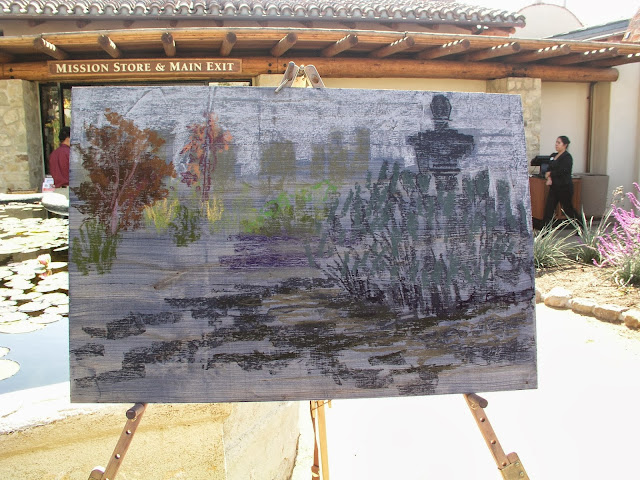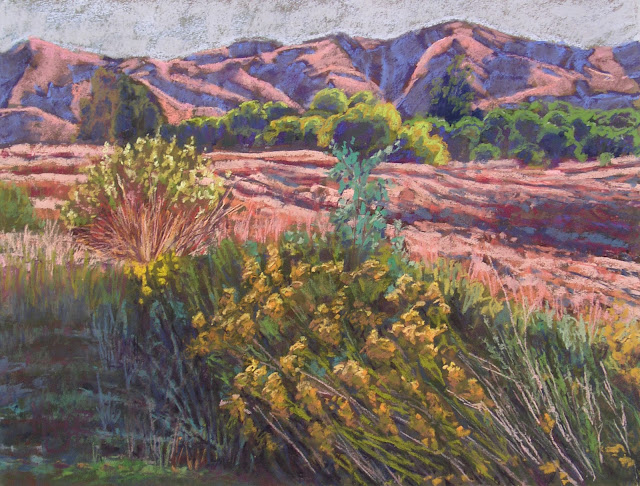Thomas was firing off his thoughts in between putting the paint down. The following are some of his thoughts at the beginning of the painting session:
- There is no substitute for getting in your painting mileage. If you want to be good you have to put in your time.
- It is more important to get 100 starts than 100 finishes. You will learn much more from a problem solving stand point.
- Painting the same subject over and over again will help you develop because you will be able to get farther in the painting each time you paint the subject. It will point to the new territory to go into.















































